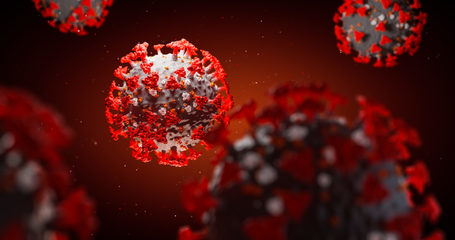COVID-19 Accurately Diagnosed by Artificial Intelligence (AI) #esante #hcsmeufr #digitalhealth #Coronavirus #covid-19 #COVID19FR #coronavirusfrance

STOP COVID : l’avenir d’internet est entre vos mains #esante #hcsmeufr #digitalhealth #Coronavirus #covid-19 #COVID19FR #coronavirusfrance
31/05/2020
Using artificial intelligence to detect Covid-19 in X-rays #esante #hcsmeufr #digitalhealth #Coronavirus #covid-19 #COVID19FR #coronavirusfrance
31/05/2020An AI model that integrates chest CT findings with clinical symptoms could be used to rapidly diagnose COVID-19 patients.
A COVID-19 diagnosis is routinely made by a positive test for the presence of SARS-CoV-2. However, the current tests are fraught with challenges. Not only are there shortages of kits, but they take time to complete and carry a possibility of false-negative results.
Researchers at Mount Sinai sought an alternative method for rapid and accurate diagnosis of patients with COVID-19. They are the first in the country to use artificial intelligence (AI) combined with imaging, and clinical data to analyze patients with COVID-19. In doing this, they have developed a unique algorithm that can rapidly detect COVID-19 based on how lung disease looks in computed tomography (CT scans) of the chest, in combination with patient information including symptoms, age, bloodwork, and possible contact with someone infected with the virus.
This study, titled “Artificial intelligence–enabled rapid diagnosis of patients with COVID-19,” was published recently in Nature Medicine and could help hospitals across the world quickly detect the virus, isolate patients, and prevent it from spreading during this pandemic. “AI has huge potential for analyzing large amounts of data quickly, an attribute that can have a big impact in a situation such as a pandemic.
At Mount Sinai, we recognized this early and were able to mobilize the expertise of our faculty and our international collaborations to work on implementing a novel AI model using CT data from COVID-19 patients in Chinese medical centers. We were able to show that the AI model was as accurate as an experienced radiologist in diagnosing the disease, and even better in some cases where there was no clear sign of lung disease on CT,” said one of the lead authors, Zahi Fayad, PhD, director of the BioMedical Engineering and Imaging Institute (BMEII) at the Icahn School of Medicine at Mount Sinai. “We’re now working on how to use this at home and share our findings with others—this toolkit can easily be deployed worldwide to other hospitals, either online or integrated into their own systems.” This research expands on a previous Mount Sinai study that identified a characteristic pattern of disease in the lungs of COVID-19 patients and showed how it develops over the course of a week and a half.
The new study involved scans of more than 900 patients that Mount Sinai received from institutional collaborators at hospitals in China. The patients were admitted to 18 medical centers in 13 Chinese provinces between January 17 and March 3, 2020. The scans included 419 confirmed COVID-19-positive cases (most either had recently traveled to Wuhan, China, where the outbreak began, or had contact with an infected COVID-19 patient) and 486 COVID-19-negative scans. Researchers also had patients’ clinical information, including blood test results showing any abnormalities in white blood cell counts or lymphocyte counts as well as their age, sex, and symptoms (fever, cough, or cough with mucus). They focused on CT scans and blood tests since doctors in China use both of these to diagnose patients with COVID-19 if they come in with fever or have been in contact with an infected patient.
Source: www.genengnews.com



